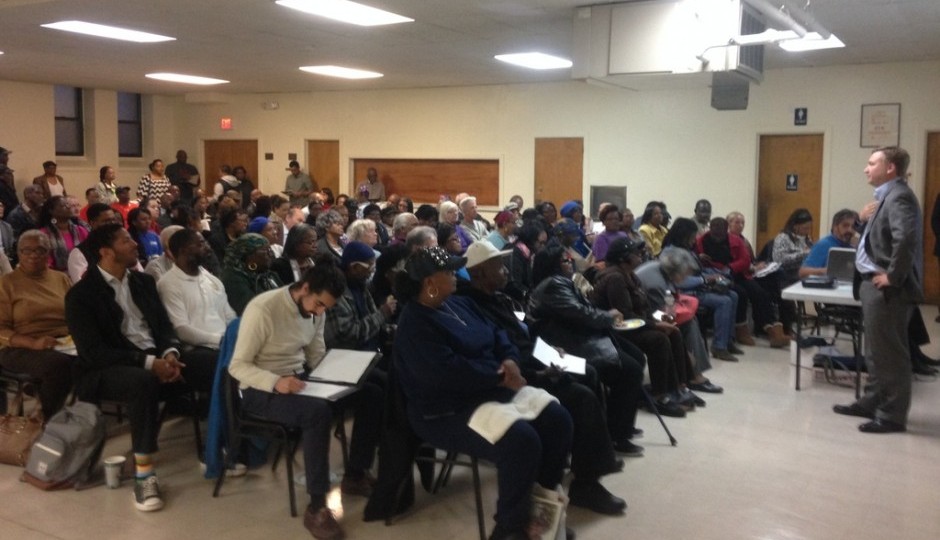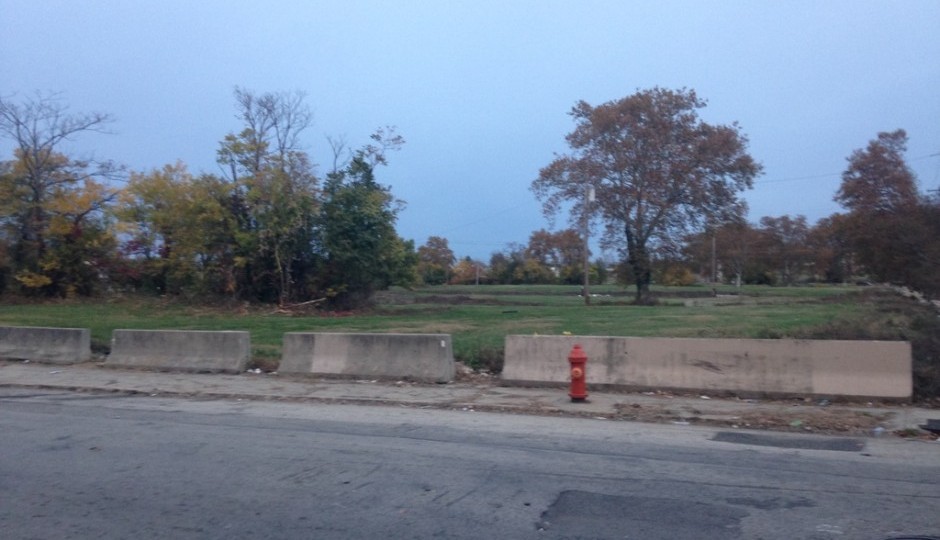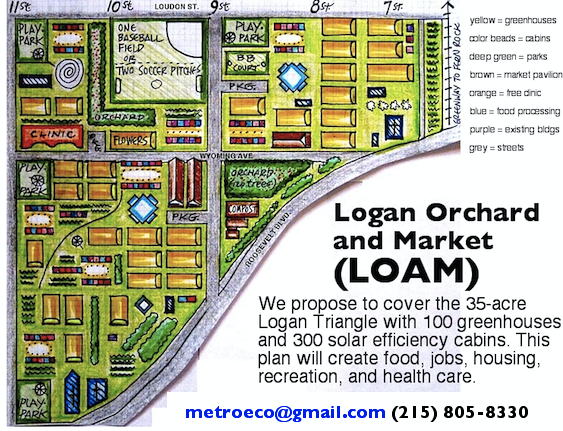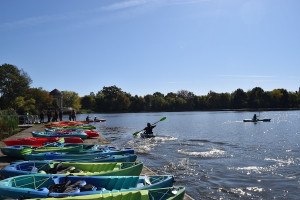Of Tiny Houses, Urban Farming and Big Plans at the Logan Triangle
One thing that has become clear as the Goldenberg Group proceeds down a long path towards building something on the 40-acre wasteland called the Logan Triangle is this: No one—not the Redevelopment Authority, not the developer it picked, nor the Logan residents themselves—wants to give Paul Glover’s Logan Orchard and Market (LOAM) project the brush-off.
The trouble is, both the city and the neighborhood stakeholders want money to meet community needs. (In fact, it was the lack of money that put this redevelopment plan on ice when the Logan Community Development Corporation, which was spearheading the plan, abruptly shut down in 2014.) And the only thing that will produce that kind of money is a large-scale redevelopment project on the Triangle itself.
That much became clear in the course of a meeting on Oct. 27 in Logan at which Goldenberg Group principals presented their bona fides to Logan residents and answered their questions about the company’s intentions for the site.
The first thing they did was shoot down rumors that the company intended to build a strip mall. Although the Goldenberg Group has built such projects in other locations, Goldenberg Group principal Jeremy Fogel explained that it was not their intent to build a purely commercial project.
The project will, however, have a commercial component, for that alone will produce the revenue needed to support a need identified in the community planning process.
That need is for recreational space for the neighborhood. While some wonder why this is a pressing need, given that Hunting Park sits at the neighborhood’s southern edge, residents point out that there’s this not-so-tiny chasm called Roosevelt Boulevard that they must cross to reach it.
Fogel stressed two things in his presentation at the meeting. One is that the Goldenberg Group has a track record of building on sites deemed impossible to build upon. The other is that the firm has a longstanding commitment to giving back to the communities where it does developments.
He also pledged to the residents who came out to Holy Trinity Bethlehem Presbyterian Church in October, just down the street from the Triangle, that his company would identify a community partner that would be the beneficiary of the company’s community commitment in connection with its project, the exact scope of which has yet to be determined.
On Nov. 24, Fogel and Ellen Rosenberg announced who that partner would be in a letter to Logan residents. Philadelphia Youth Basketball, a new nonprofit that uses basketball as a bridge to education, character development and good citizenship, will build a new, state-of-the-art recreational facility on the Triangle site in connection with the Goldenberg project. (The partnership will be formally announced at an event on Dec. 3 at Logan’s Cooke Elementary School, where PYB already operates a program. The event will also serve as the kickoff of a fundraising campaign for the facility.)

Brian Abernathy speaks to the residents of Logan about the redevelopment of the Logan Triangle. | Photo: Sandy Smith
So what does this all mean for activist Paul Glover’s LOAM proposal, which sought to create community orchards, gardens and greenhouses along with compact or “tiny” homes, a playground and a health center on the site?
The good news is, despite PRA Executive Director Brian Abernathy‘s lack of response to Glover’s questions about how much of the Triangle is slated to be developed at the meeting, is that it’s not dead. It just may have to be broken up into pieces.
A community planner who has worked with both the PRA and Logan residents on the Triangle redevelopment plan indicated that this was not inconsistent with the community’s stated desires.
There is some support for some of the nontraditional approaches Glover wishes to take towards neighborhood revitalization among Logan residents.
One resident who attended the meeting said he agreed that urban agriculture would be something worth pursuing in the neighborhood, and at a prior meeting where the selection of the Goldenberg Group was announced, one resident repeatedly wrote in “tiny houses” where residents were asked what components should be added to various elements of the plan.
But several residents also expressed opposition to the idea that the Triangle should largely be given over to green space. One such former resident specifically stated that she would like to see a Wawa convenience store on the site. Given the chain’s current aversion to locations in lower-income city neighborhoods, that appears unlikely, but it’s quite possible that some sort of convenience retail could emerge as part of the Goldenberg Group’s plan.
Residents also expressed concerns about public safety and clean streets at the meeting. Providing both costs money, and the residents don’t have enough of it to make a difference in tackling either. The revenues generated by taxpaying businesses on the Triangle site might just provide that money.
Meanwhile, there are scores of other vacant lots scattered around the Logan neighborhood. Abernathy has indicated that he is willing to support the placement of various elements of the LOAM proposal on these lots. While that would not create the unified community Glover envisioned, it might be enough to test his concept and see whether it produces the benefits he hopes to deliver to Logan residents.
Abernathy stressed in his opening remarks at the October meeting that the selection of the Goldenberg Group as the developer marked the beginning, not the end, of a process whose goal is a stronger and more livable Logan community. There’s still room for everyone interested in pursuing that goal to contribute something, including LOAM.




